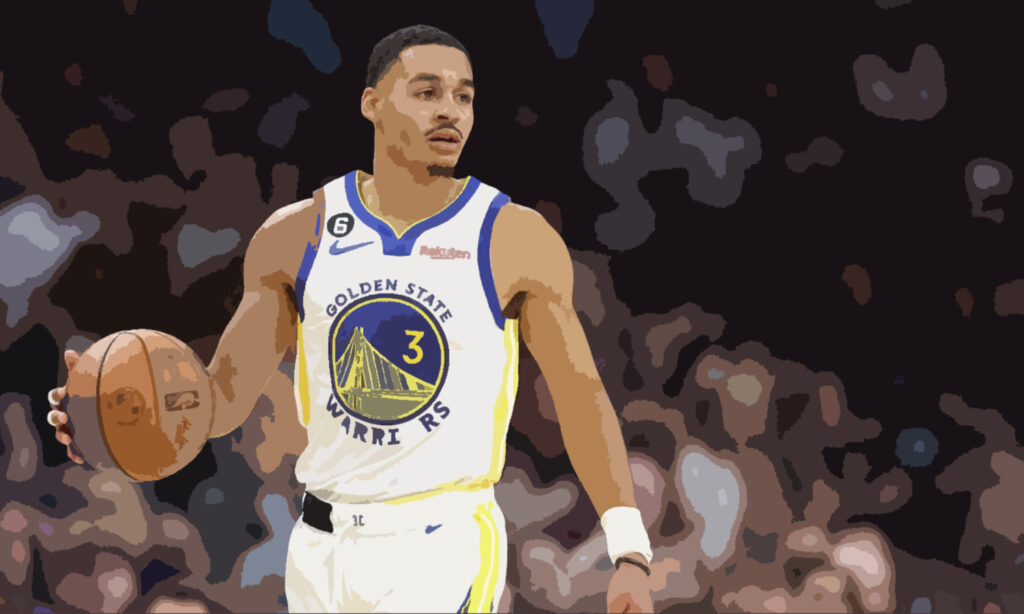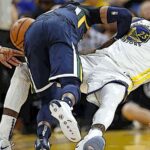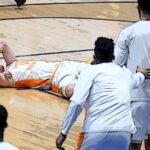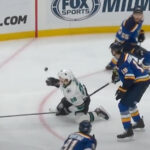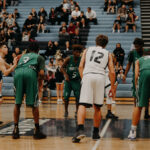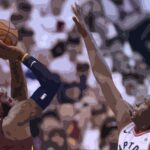Like any other sport, the game of basketball is governed by a broad set of rules.
These rules include fouls for various forms of player contact, shot clock violations, illegal handling of the ball and more.
When a player wants to move while the ball is in their possession, they must adhere to basketball guidelines for dribbling.
So, any illegal movement with the ball falls under the category of a dribbling violation.
The dribbling violations typically whistled down by the referees include traveling, double dribbling and carrying.
What’s interesting thing is that these 3 dribbling violations overlap to some degree and can confuse newcomer fans to the sport.
But before we go on, let’s start by answering the question you came here…
What is a Carry in Basketball?
In basketball, a carry is an illegal dribbling violation also referred to as palming. The violation occurs when a player pauses the dribble by allowing the ball to come to rest in one hand, then proceeds to dribble again. The same applies if they pick up the ball by placing their hand underneath it.
The reason why carrying the ball is illegal is that it gives the player an unfair advantage while supposedly continuing to dribble.
That’s because it allows them easier ball control and better ball protection against their opponent compared to legal dribbling.
Carry vs Travel vs Double Dribble in Basketball
The main difference between a carry and travel is in the hands and feet.
While a carry involves the brief pause in dribbling, the player didn’t necessarily have to move their feet to cause the violation.
Meanwhile, a travel violation happens when a player moves their pivot foot after the cessation of dribbling.
Once you collect the ball after dribbling, you are anchored in place by your pivot foot. You cannot lift or slide the pivot foot unless you’re in the process of passing or shooting the ball.
On occasion, you’ll see players that haven’t commenced dribbling yet when holding the ball. In this case, they can also lift the pivot to begin their dribble.
To distinguish between a carry and double dribble, you’ll see it in the handling of the ball.
A carry involves holding onto the ball with one hand. Ball carrying is less noticeable as the player tries to quickly correct their error and resume dribbling.
Meanwhile, a double dribble is typically more clear-cut.
The violation occurs when the player holds onto the ball with both hands after the dribble and then proceeds to dribble again.
Otherwise, you’d see the player dribble with both hands simultaneously, which also falls under the category of double dribbling.
Is Carrying ever Legal in a Game?
There are certain circumstances where a player may carry the ball without committing a violation.
Players can momentarily rest the ball in their hands as long as they continue to dribble the ball with a downward motion.
In addition, when catching a pass or rebound, a player may use a "soft touch" to cushion the ball into their hand.
But they must immediately resume dribbling or pass the ball to a teammate.
Lastly, a player is allowed to use a “fake” movement to momentarily pause the ball, but they must immediately resume dribbling or pass the ball off.
This latter move is commonly used by the Professor in his basketball videos.
He slows the pace of the dribble and head fakes to give the impression he’s about to shoot.
When his opponent falls for the bait and position’s themselves for a block attempt, the Professor uses that hesitation to dribble past them.
Although this is street ball example, this very play is commonly used by NBA players to give them an edge against their opponent.
The best players use this technique to make it difficult to defend against them provided they have the option to shoot or drive the net.
Final Thoughts
Carries are considered to give unfair advantage to the ball handler as it allows them to control the ball more easily.
It is therefore considered a turnover since the referee will blow the play dead and hand over possession to the opposing team.
Some of the most diehard fans are convinced that NBA players get away with way too much these days.
You’ll often hear them bickering online or social media about blatant travel violations.
Especially, three-step travel on the dunk or layup attempts for the basket.
But the NBA has made clear players are allowed a “gather step” before taking the additional standard two steps on the stride.
So, if you think travelling is never called, carries are even less apparent.
The belief is that the referees are lax on certain violations in order to keep the game as entertaining as possible. Excitement is what sells those tickets!
But, in reality, the game is extremely fast with a lot of grey area that referees must decide to call on a dime.
And these plays happen consistently throughout the game.
Don’t get me wrong. The players will do anything to gain an advantage, even if it’s a carry for a fraction of a second.
